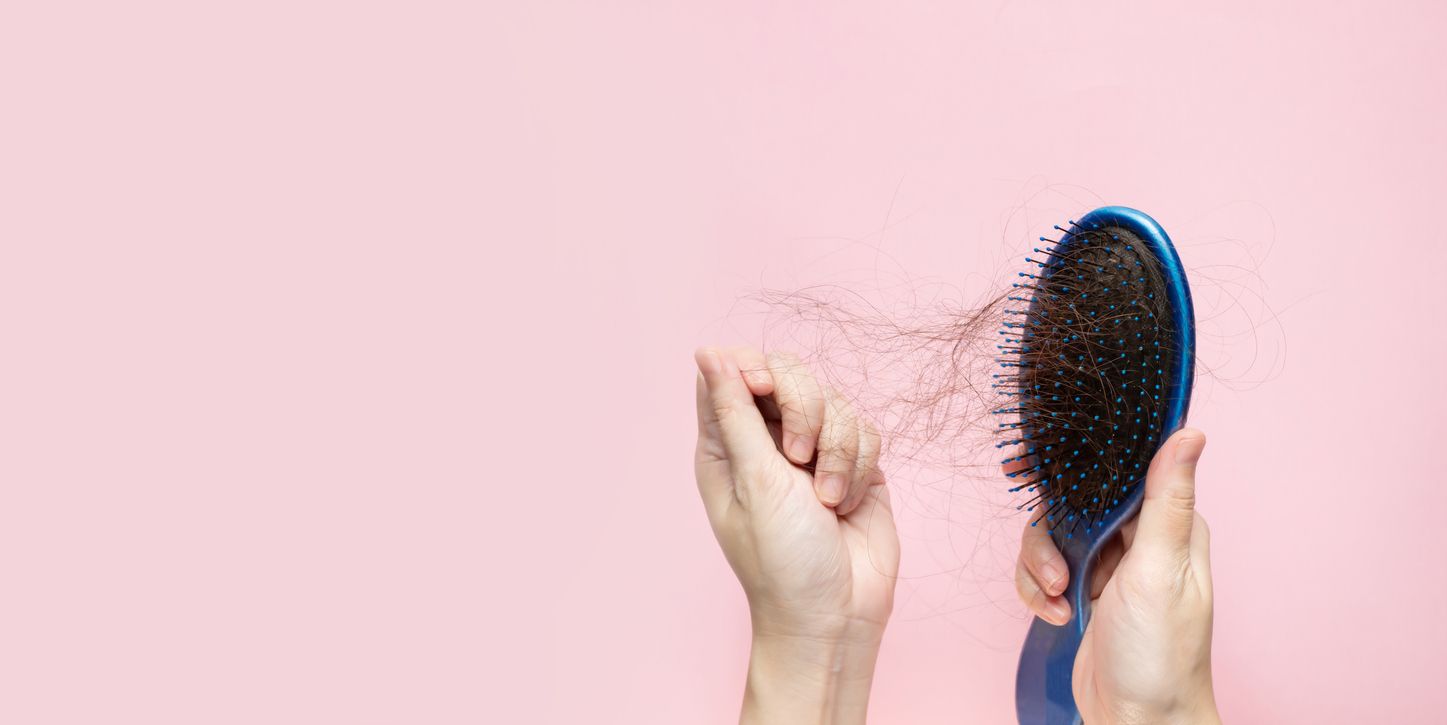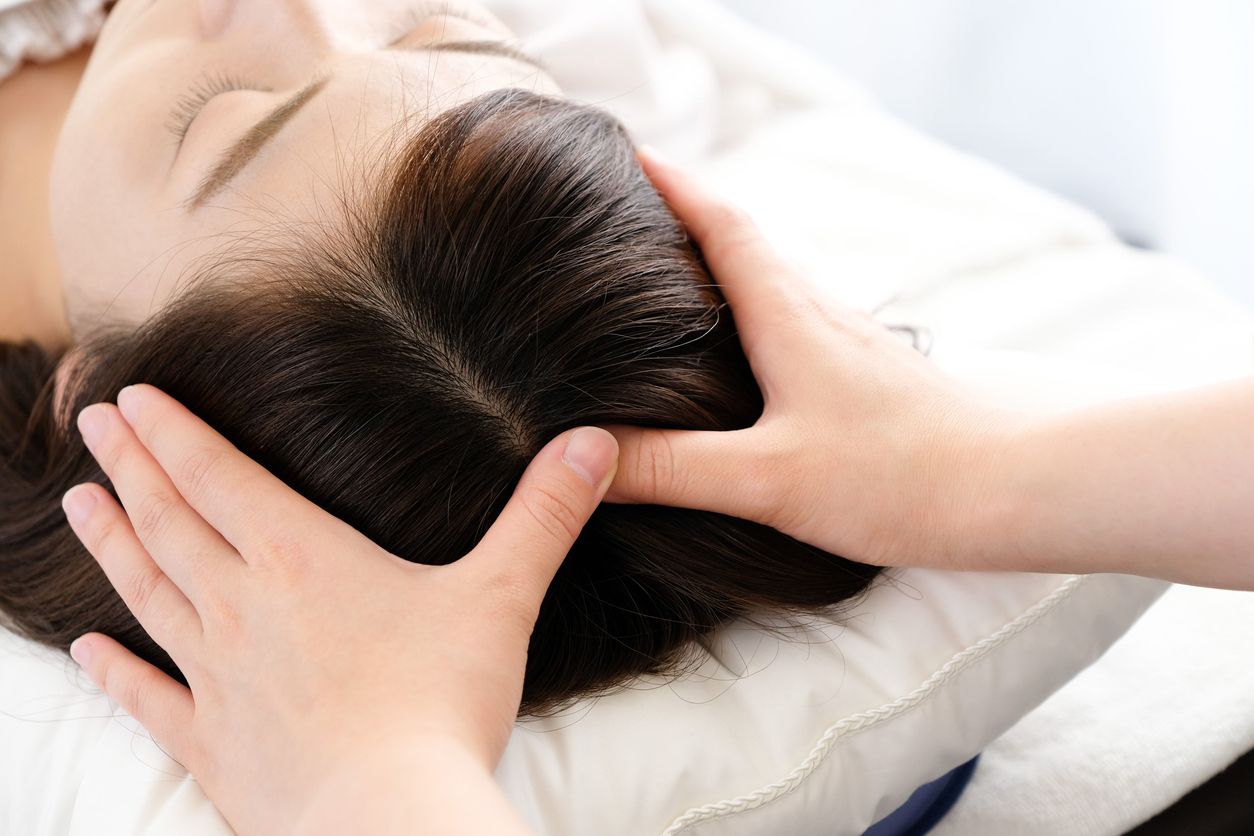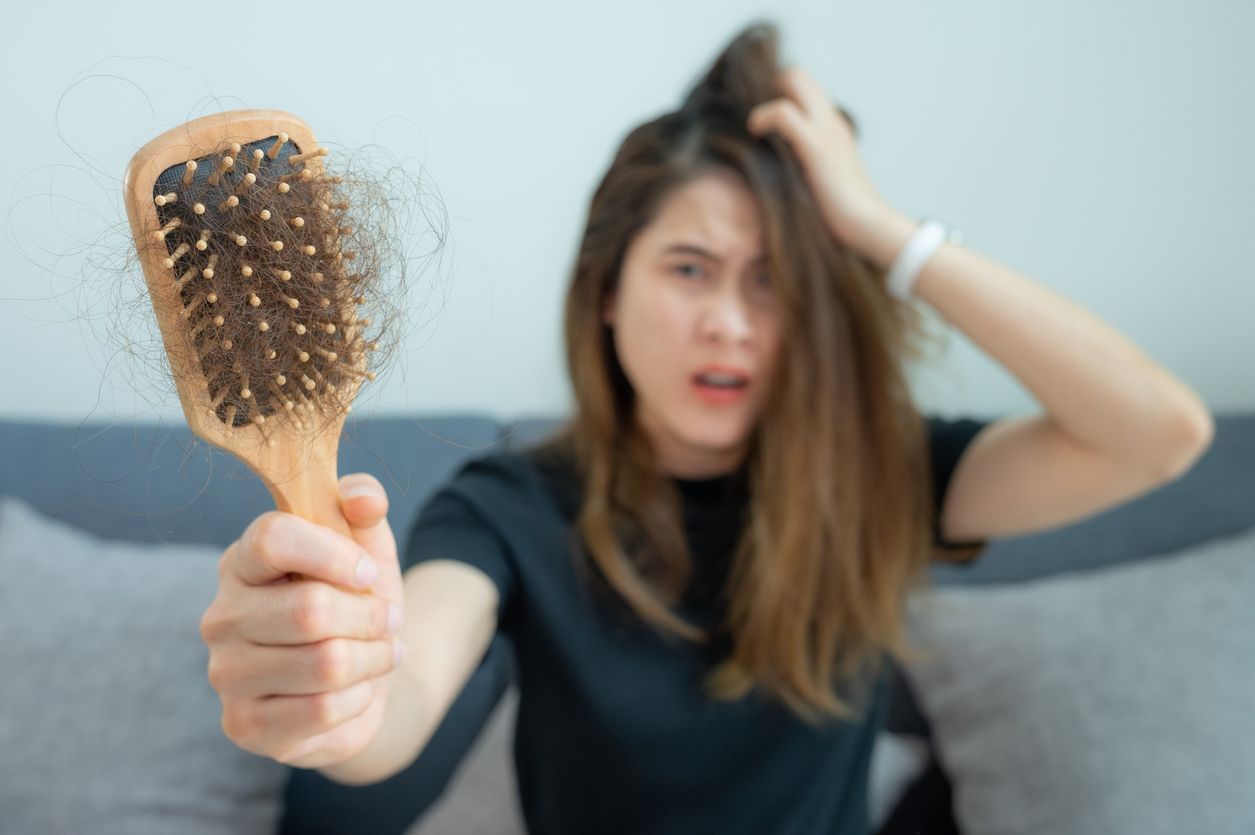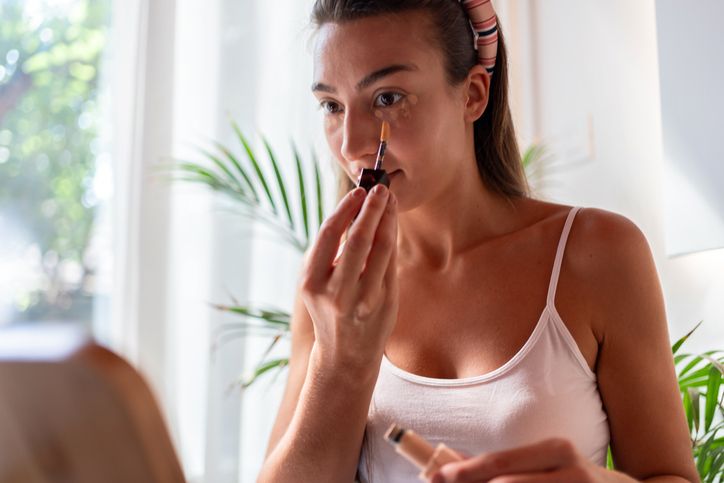- Home
- Trend
- Weight Loss Strategies
- Acne Tips
- Hair Health Information
- Blemish Removal Tips
- Acne Scar Removal Tips
- Muscle Building Techniques
- Intimate Care Tips
- Postpartum Intimate Care
- Eye Bags Wiki
- Tips for Face Slimming
- Secret of Permanent Hair Removal
- Breast Enlargement Tips
- Cure to Snoring
- Marionette Lines
- Skin-Tightening Secrets
Hair loss can be a distressing experience for many individuals, impacting self-esteem and confidence. While some degree of hair shedding is normal, excessive hair loss and thinning can be a cause for concern. Understanding the factors that contribute to hair loss and adopting proactive strategies for hair health are essential for maintaining a full and vibrant mane. In this blog, we'll explore effective strategies for preventing hair loss and promoting healthy hair growth.
Why Is My Hair Experiencing Gradual Thinning? 4 Sudden Thinning Hair Risk Factors

While some hair shedding is natural, excessive hair fall or thinning can be a source of worry. Here, we explore the different types of hair loss and their underlying causes:
1. Hereditary Hair Loss (Androgenetic Alopecia)
This is the most common type of hair loss, affecting millions globally. It's influenced by genetics, with a family history of hair loss increasing your susceptibility. Androgenetic alopecia manifests differently in men and women:
• Male Pattern Baldness: This is characterised by a receding hairline, typically starting at the temples and progressing in an "M" shape. Hair thinning also occurs on the crown of the head, potentially leading to bald spots.
• Female Pattern Baldness: Unlike men, women with hereditary hair loss experience diffuse thinning over the top and mid scalp. The hairline remains mostly intact, and complete baldness is uncommon. However, hair density reduces, making the scalp more visible.
2. Alopecia Areata
This is an autoimmune disorder that causes patchy hair loss. The immune system mistakenly attacks hair follicles, leading to sudden hair fall in round or oval patches, often on the scalp but potentially affecting other body hair as well.
3. Telogen Effluvium
This type of hair loss involves excessive hair shedding throughout the scalp, often triggered by a stressful event, illness, childbirth, significant weight loss, or nutritional deficiencies. It's usually temporary, with hair growth returning to normal within a few months after addressing the underlying cause.
4. Trichotillomania (Hair Pulling Disorder)
This is a psychological condition characterised by the compulsive urge to pull out hair from the scalp, eyebrows, or other areas. The hair loss pattern can be patchy and uneven, and seeking professional help is crucial for managing the condition.
Other Factors That Cause You Losing Hair

While genetics and hormones play a significant role in hair loss, several other factors can contribute to excessive hair shedding or thinning. Here's a closer look at these potential influencers:
1. Medical Conditions
Underlying medical issues can disrupt the hair growth cycle and lead to hair loss. Examples include:
• Thyroid Disorders: Both an overactive and underactive thyroid can disrupt hair follicle function and cause hair thinning.
• Scalp Infections: Fungal or bacterial infections of the scalp can damage hair follicles and lead to hair loss.
• Autoimmune Diseases: Certain autoimmune conditions, like lupus or alopecia areata, can attack hair follicles and cause patchy hair loss.
• Nutritional Deficiencies: Deficiencies in essential vitamins and minerals, like iron, biotin, and vitamin D, can hinder hair growth and contribute to hair loss.
2. Medications
Hair loss can be a side effect of various medications used to treat different health concerns. These medications may disrupt the hair growth cycle or cause hormonal imbalances. Discussing potential side effects with your doctor is crucial when starting a new medication.
3. Lifestyle Habits
Certain lifestyle choices can negatively impact hair health and accelerate hair loss. Consider these factors:
• Chronic Stress: Stress can trigger the release of hormones that disrupt the hair growth cycle, leading to increased hair shedding.
• Poor Diet: A diet lacking essential nutrients like protein, iron, and vitamins can impede hair growth and contribute to hair thinning.
• Harsh Hair Care Practices: Frequent chemical treatments, tight hairstyles that pull on hair follicles, and excessive heat styling can damage hair and promote breakage.
• Environmental Factors: Exposure to ultraviolet (UV) radiation from sunlight can damage hair and contribute to hair loss. Additionally, hard water can strip away natural oils from the scalp, potentially leading to dryness and hair breakage. Similarly, high water pressure during showers can damage hair cuticles and exacerbate hair loss.
免費體驗
F8 Hair Regrowth Treatment
1 Minute Self-Registration
Date should not be before minimal date
Building a Foundation for Healthy Hair: Scalp Care & Lifestyle Habits

1. Nourishing Your Scalp
The scalp is the foundation for healthy hair growth. Here's how to create a scalp environment that fosters strong, resilient hair:
• Gentle Cleansing: Harsh shampoos can strip away natural oils, leaving your scalp dry and irritated. Opt for mild shampoos formulated for your hair type. Consider shampoos that are fragrance-free and sulphate-free to minimise potential irritation.
• Chemical-Free Care: Limit your use of harsh chemicals on your scalp. Avoid frequent chemical treatments like colouring, straightening, or perming, as these can damage hair follicles and hinder growth. If you do choose to use chemical treatments, opt for gentler formulas and space them out as much as possible.
• Heat Styling with Caution: Excessive heat styling with tools like blow dryers, straighteners, and curling irons can damage hair cuticles and promote breakage. Minimise heat styling whenever possible. If heat styling is necessary, use heat protectant sprays and apply the lowest heat setting effective for your hair type.
• Scalp Massages for Growth: Regular scalp massages can improve blood circulation to the scalp, which can nourish hair follicles and promote healthy hair growth. Gently massage your scalp with your fingertips for a few minutes daily or while shampooing.
2. Fueling Your Hair from Within
Just like any other part of your body, your hair needs proper nutrition to grow strong and healthy. Here's how to nourish your hair from within:
• Nutrient-Rich Diet: A balanced diet rich in essential vitamins, minerals, and proteins provides the building blocks for healthy hair growth. Include plenty of leafy greens, fruits, nuts, and lean proteins in your diet.
• Essential Vitamins: Biotin, Vitamin D, Vitamin A, Iron, and Zinc all play crucial roles in hair growth. Ensure you're getting enough of these vitamins through dietary choices or consider consulting a healthcare professional about potential supplementation.
• Protein Power: Hair is primarily composed of protein, so ensure adequate protein intake through lean meats, poultry, fish, eggs, and plant-based protein sources like beans and lentils.
3. Lifestyle Habits for Optimal Hair Health
Beyond scalp care and diet, certain lifestyle habits can significantly impact your hair health:
• Stress Management: Chronic stress can disrupt the hair growth cycle and lead to increased hair shedding. Techniques like mindfulness practices, meditation, yoga, and deep breathing exercises can help manage stress levels and promote overall well-being, which can positively impact hair health.
• Hydration is Key: Adequate hydration is essential for maintaining scalp and hair moisture. Aim to drink plenty of water throughout the day to keep your scalp healthy and promote hair growth.
• Balanced Diet in Action: A balanced diet goes beyond just providing building blocks for hair growth; it also helps manage internal factors that can contribute to hair loss. Leafy greens, fruits, nuts, and lean proteins not only nourish hair but can also contribute to overall hormonal balance and stress management, both of which are crucial for scalp and hair health.
Advanced Treatments for Hair Loss: Maintenance and Intervention

While gentle hair care, a healthy diet, and stress management are crucial for overall hair health, some individuals may require additional support to address hair loss. Here's an overview of advanced treatments that can be used for both maintenance and intervention:
Minoxidil
• Function: This topical medication is available over-the-counter and is often the first line of defence for hair loss. It works by stimulating hair follicles and promoting hair growth.
• Application: Minoxidil comes in liquid or foam form and is applied directly to the scalp twice daily.
• Effectiveness: Studies show that minoxidil can effectively slow down hair loss and promote some hair regrowth, particularly in men with male pattern baldness. Results may take several months to become noticeable and consistent use is crucial for maintaining benefits.
• Maintenance or Intervention: Minoxidil can be used for both maintenance and intervention. It can help slow down further hair loss and potentially promote some regrowth, making it suitable for ongoing use.
Finasteride
• Function: This prescription medication is only available for men. It works by blocking the conversion of testosterone into dihydrotestosterone (DHT), a hormone that contributes to hair loss.
• Application: Finasteride comes in tablet form and is typically taken once daily.
• Effectiveness: Finasteride has been shown to be effective in slowing down hair loss progression and promoting some hair regrowth in men with male pattern baldness. It's important to note that finasteride may not be suitable for everyone and can have side effects like decreased libido and erectile dysfunction. Discuss these risks and benefits with your doctor before starting treatment.
• Maintenance or Intervention: Finasteride is primarily used for intervention and may not be suitable for long-term use due to potential side effects. It can be a powerful tool to stop or slow down hair loss progression, but ongoing monitoring and evaluation by a doctor are essential.
Low-Level Laser Therapy (LLLT)
• Function: LLLT uses low-energy laser beams to stimulate hair follicles and promote hair growth. Studies suggest that LLLT may be effective in promoting hair growth, particularly in combination with other hair loss treatments like minoxidil. The F8 Hair Regrowth Treatment is a multi-faceted approach to hair loss that leverages the power of Low-Level Laser Therapy (LLLT). Here's how it works:
• The F8 treatment utilises low-energy laser beams to target the scalp. This aligns with the core principle of LLLT, which theorises that low-energy laser light can stimulate hair follicles and promote blood circulation in the scalp, creating a more conducive environment for hair growth.
• Hair Growth Serum: The F8 treatment combines LLLT with a world-class hair growth serum. The specific ingredients and their effectiveness are not mentioned, but this suggests a multi-pronged approach that may target hair growth beyond just LLLT.
• Scalp Analysis: A professional scalp analysis is included to understand your specific hair loss pattern and scalp health. This personalised approach allows the treatment plan to be tailored to your individual needs.
• Post-Treatment Care: The F8 program includes post-treatment guidance, which can be crucial for optimising results and maintaining scalp health.
• Application: LLLT can be done in-clinic with specialised devices or at home with handheld laser therapy devices. Treatment protocols vary depending on the specific device and your hair loss concerns.
• Effectiveness: Studies suggest that LLLT may be effective in promoting hair growth, particularly in combination with other hair loss treatments like minoxidil.
• Maintenance or Intervention: LLLT can be used for both maintenance and intervention. It's a non-invasive and relatively safe option for promoting hair growth and may be suitable for ongoing use.
Hair Transplant Surgery
• Function: Hair transplant surgery involves surgically removing hair follicles from a donor area on the scalp where hair growth is typically dense and transplanting them to balding areas.
• Application: Hair transplant surgery is a complex procedure performed by a qualified dermatologist or hair transplant surgeon.
• Effectiveness: Hair transplant surgery is a permanent solution for hair loss and can create a natural-looking hairline. However, it can be a costly procedure and requires a consultation with a doctor to determine your candidacy.
• Maintenance or Intervention: Hair transplant surgery is primarily used for intervention and is a permanent solution for hair loss. It's not a maintenance treatment, but the transplanted hair follicles typically remain healthy for life.
Regular Monitoring and Maintenance to Let Your Hair Grows Healthily

The best treatment option for hair loss depends on various factors, including the type and severity of your hair loss, your overall health, and your personal preferences.
Regularly monitoring your scalp and hair for any changes or signs of hair loss allows for early intervention. No matter what options you choose, adopting these strategies for preventing hair loss and maintaining healthy hair can significantly impact the vitality and appearance of your hair. Consistent care, a balanced lifestyle, and seeking professional advice when needed are essential steps towards achieving and maintaining vibrant, healthy hair.
免費體驗
F8 Hair Regrowth Treatment
1 Minute Self-Registration
Date should not be before minimal date
FAQ

Why is my hair growing slower than before?
Hair growth can slow down due to several reasons. As we age, the rate of hair growth naturally decreases. Hormonal changes, such as those experienced during menopause or pregnancy, can also affect hair growth cycles. Additionally, nutritional deficiencies, particularly in essential vitamins like biotin and iron, can lead to slower hair growth. Chronic stress is another factor that can disrupt the hair growth cycle, causing hair to grow more slowly or even fall out prematurely.
Can birth control pills cause hair loss?
Yes, birth control pills can sometimes cause hair loss as a side effect. This is because certain hormonal contraceptives can alter hormone levels in the body, leading to hair thinning or shedding. However, not everyone experiences hair loss while taking birth control pills, and the impact can vary depending on individual factors.
What are the causes of hair loss in women?
Hair loss in women can result from various factors. Hormonal imbalances, such as those related to menopause, thyroid disorders, or polycystic ovary syndrome (PCOS), can contribute to hair thinning or shedding. Genetics also play a role, with female pattern hair loss being a common hereditary condition. Stress, both physical and emotional, can trigger a type of hair loss called telogen effluvium, where hair prematurely enters the resting phase and falls out. Nutritional deficiencies, autoimmune conditions like alopecia areata, certain medications, and even hairstyling practices that pull on the hair can also lead to hair loss in women.
How can I treat hair loss and promote healthy hair follicles?
Treatment for hair loss depends on the underlying cause. For genetic hair loss, medications like minoxidil (Rogaine) and finasteride (Propecia) can be effective in stimulating hair growth and preventing further loss. Lifestyle changes, such as reducing stress levels, improving nutrition, and avoiding harsh hair treatments, can promote healthier hair follicles. Scalp treatments like laser therapy or Platelet-Rich Plasma (PRP) injections can also support hair regrowth by enhancing scalp health and stimulating follicles.
5. Why am I experiencing noticeable hair loss suddenly?
Sudden hair loss can be alarming and may be caused by various factors. Physical or emotional stress, such as illness, surgery, or significant life changes, can trigger a type of hair loss called telogen effluvium. Hormonal fluctuations, such as those during pregnancy, childbirth, or menopause, can also lead to noticeable hair shedding. Certain medications, particularly those that affect hormone levels, can cause hair loss as a side effect. Underlying health conditions like thyroid disorders or autoimmune diseases may also contribute to sudden hair loss.









